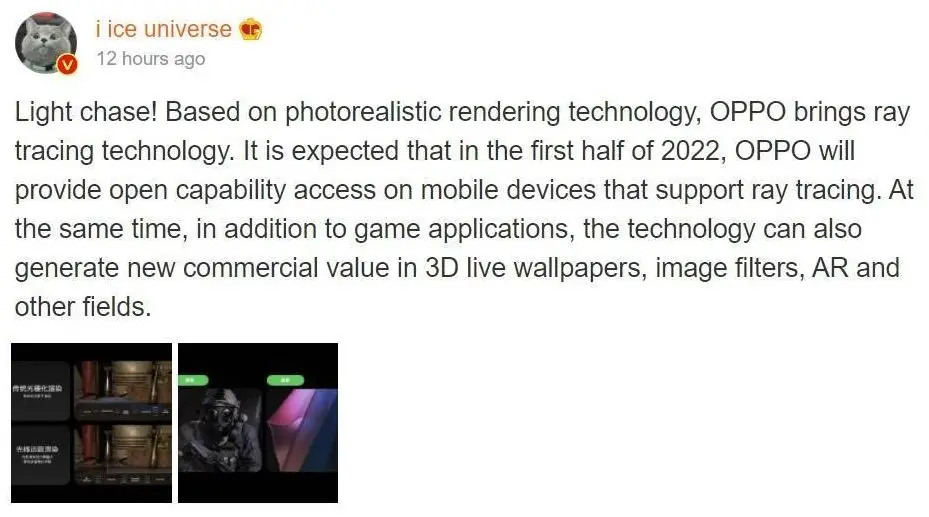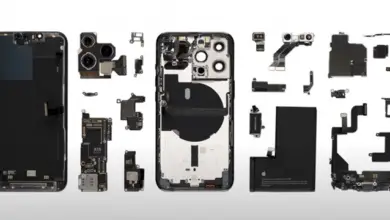Oppo demos ray tracing on one of their cell phones

In addition to Samsung, Oppo is also preparing to make ray tracing technology available on smartphones. If you’ve never heard of it, it’s a graphical rendering technique that produces lifelike light effects and shadows, making games even more realistic. What’s more, the Chinese manufacturer is so far ahead of Samsung that it has already unveiled its solution at its developer conference.
The company presented its beam tracking technology within the Oppo Developer Conference framework or ODC and used the Oppo Reno 6 5G for the demo. Inside the smartphone, a 6-nanometer MediaTek Dimensity 1200 chipset performs the calculations, and an ARM, Mali-G77 GPU module, performs the task of graphics acceleration. This configuration is incapable of beam tracking, so the Oppo solution could be some software-accelerated option that appears to be built into ColorOS 12.

Officially, the manufacturer has not spoken about this. Still, GizmoChina’s findings confirm the above statement, saying that Oppo’s beam tracking is based on the Vulkan API and is indeed part of the operating system. Plus, the effects will be visible in games and image filters, augmented reality apps, and live wallpapers. The Chinese company plans to introduce the technology sometime next year, and in the meantime, it is likely to be hammered out a lot more. In addition, in parallel, it is said that a proprietary 3-nanometer mobile chipset is being developed in the background, which may be unveiled to the general public sometime in 2023. Who knows, maybe with that in-house chipset, they can further enhance their beam tracking solution capabilities.

It has been heard several times and read on our site that Samsung is working with the AMD team to develop its next high-end processor, in which the graphics accelerator will now be able to have ray tracking functionality. It was recently revealed that ARM is also planning to launch a high-end graphics accelerator capable of 30 percent more performance than the recently announced Mali-G710. They also added that they plan to introduce beam tracking for their GPU modules.
Although Oppo was the first to flash its solution, Samsung is likely to overtake them and ARM with ray-tracing over the phone. Their Exynos chipset, developed jointly with AMD, which will already be able to do so, will crumble under cover of the Galaxy S22 mobiles, at least in the specimens that will be marketed in Europe and the Middle East. If the information and rumors so far are accurate, the chip and graphics controller in question could make the Samsung Galaxy S22 phones one of the best gamer mobiles of next year.

Not everyone is optimistic about smartphone beam tracking. Nvidia CEO Huang Zhen-hun, for example, believes that games that include ray tracing are too big for mobiles, specifically in terms of size and data processing. He thinks the time will come for everything, and when that happens, they will consider creating such a technology, but in the meantime, they will recommend stream services like GeForce Now to everyone. According to him, the ray-tracing provided by the phone hardware will not be able to approach the level of desktops and game consoles for a long time.



